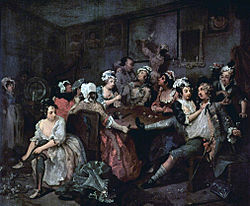Caricature, Romanticism, Expressionism, Dada, and Social Realism are the labels scholars have pinned on the art of social comment. Yet the works that continue to interest us are those of individual artists who have pressed beyond the strictures of any “ism” in art or politics.
Chiefs of government come and go, however corruption, poverty and war will probably abide forever, or at least, far into the future of mankind. The failings of social and political institutions and the flaws of individual people have, since the Renaissance, provided subject matter for artists who wanted to probe and protest the human condition.
Whether we are or are not inspired by the works of artists that wish to make a social comment with their art, it matters little. We need not know the conditions that prompted them, because the conditions have been with us since the Serpent sold a bill of goods to Adam and Eve. Does Peter Bruegel’s “Blind Leading the Blind” really make a statement against submissive following of the established church or slavish following of the reform movement? It doesn’t really matter, because we are accustomed to the image of men being led blindly to the edge of the abyss.

William Hogarth (below) is another artist that used his works to make a societal comment with his series of paintings of “The Rakes Progress”. These were a series of satires from contemporary English life in 1730. The point of the series was morality with candid scenes of vice and dissipation.

